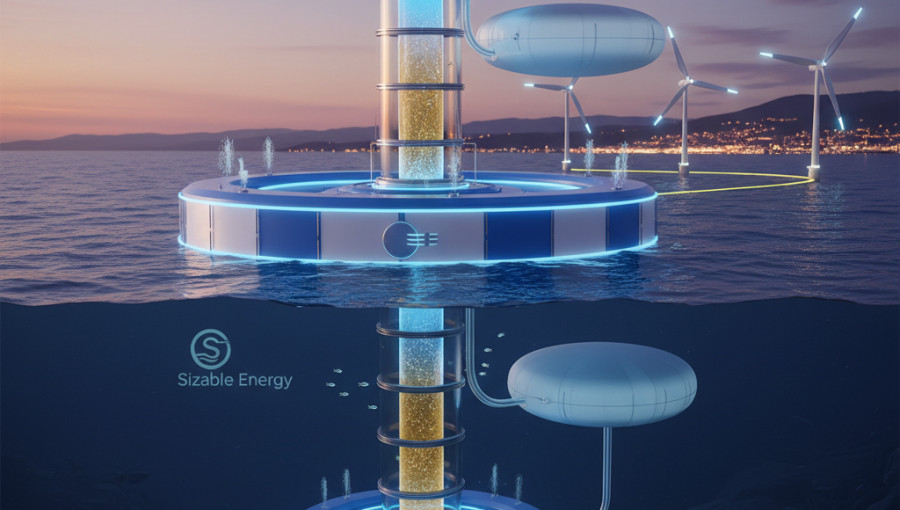An Italian startup, Sizable Energy, has secured $8 million in seed funding to advance its innovative concept for offshore energy storage. The company is developing a system that adapts pumped hydro technology for the ocean, using a large vertical pipe and inflatable reservoirs on the seafloor and surface. This design aims to provide a standardized and cost-effective solution for long-duration energy storage, a critical component for grids increasingly reliant on renewable sources. The new capital will finance the construction of the company’s first 1-megawatt offshore demonstration project.
Founded in 2022 by nuclear engineer Manuele Aufiero, Sizable Energy is tackling the dual challenges of reinventing pumped hydro storage and harnessing the marine environment for clean energy. While traditional pumped hydro projects remain a dominant form of energy storage globally, their development has slowed due to high costs, long construction timelines, and the need for specific mountainous geography. By moving the concept offshore, Sizable aims to create a standardized system that can be deployed more quickly and efficiently, as the ocean environment is far more uniform than terrestrial landscapes.
The company’s system is a gravity-based design that pumps a briny liquid up a vertical pipe fixed to the seabed. The liquid is stored in a large, inflatable membrane reservoir that appears like a floating donut on the surface, with another reservoir at the base. To generate electricity, the process is reversed, allowing the liquid to flow down and turn turbines. This approach is designed to compete with lithium-ion batteries, which become prohibitively expensive for storage durations beyond a few hours, by offering a scalable solution for storing energy for eight to 24 hours or longer.
Sizable Energy projects that its technology can achieve a power equipment cost of under $810 per kilowatt and, crucially, an energy storage cost of less than $23 per kilowatt-hour at scale. These figures would make it highly competitive in the emerging market for long-duration storage. The economic model is particularly favorable for larger installations, as the cost of subsea cables and mooring infrastructure is better justified by higher power throughput.
Following successful kilowatt-scale prototype tests and durability assessments in a specialized wave tank, the company is now preparing to build a larger demonstration unit. This 1-megawatt device, with a radius of 50 meters (approximately 164 feet) and operating in a water column up to 500 meters (about 1,640 feet) deep, will be installed off the coast of Reggio Calabria, Italy. Although this initial project will not be connected to the grid, the company has already secured a 10-megawatt grid connection for its first commercial-scale development.
A key challenge is engineering a structure that can withstand the harsh ocean environment without becoming too expensive. The design incorporates protective outer rings to disrupt waves and bilge pumps to prevent the surface reservoir from being weighed down. The company also sees a significant opportunity in co-locating its storage systems with offshore wind farms. This synergy would allow them to share expensive grid connection infrastructure and transform the intermittent power from wind turbines into a stable, predictable supply of clean energy.

